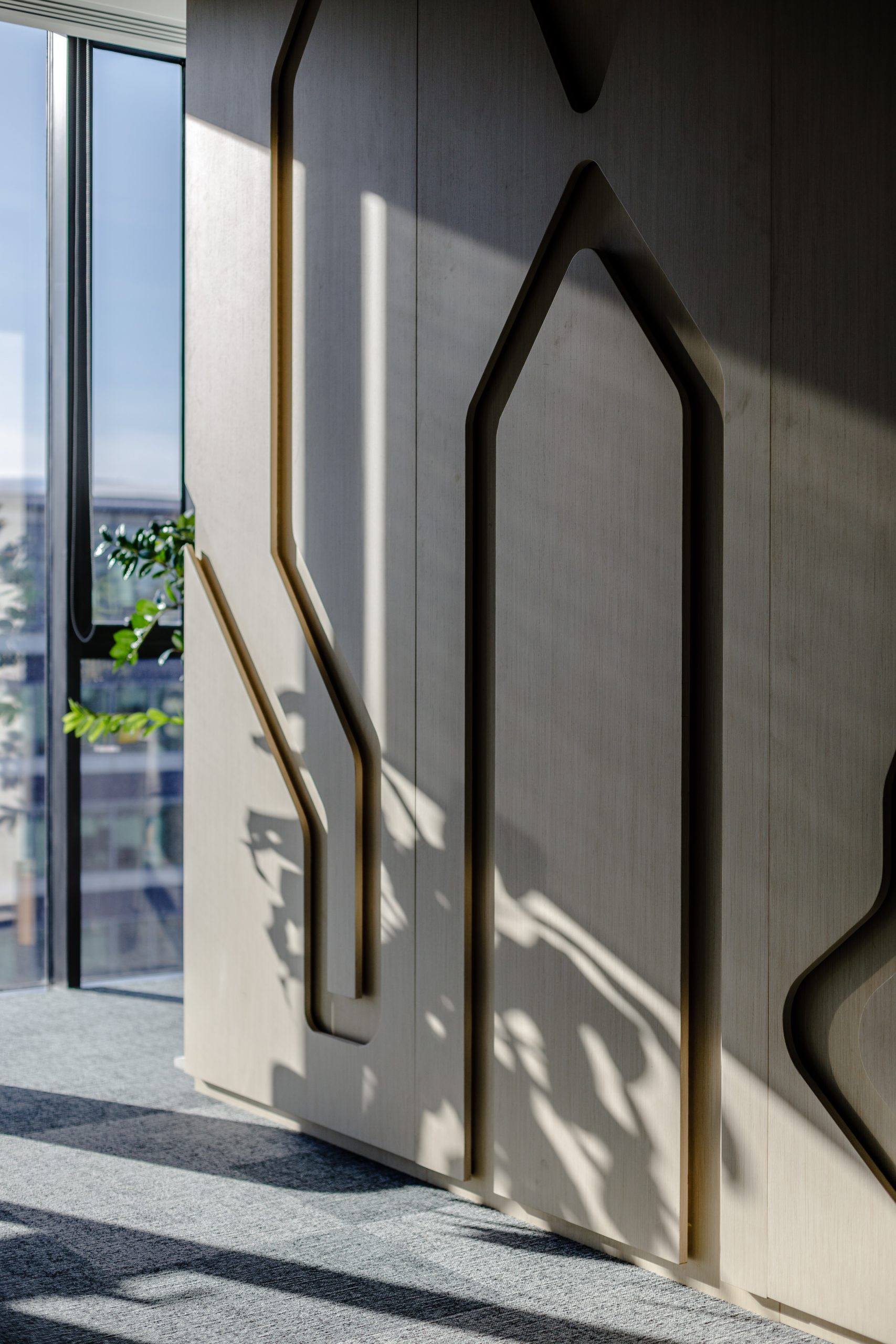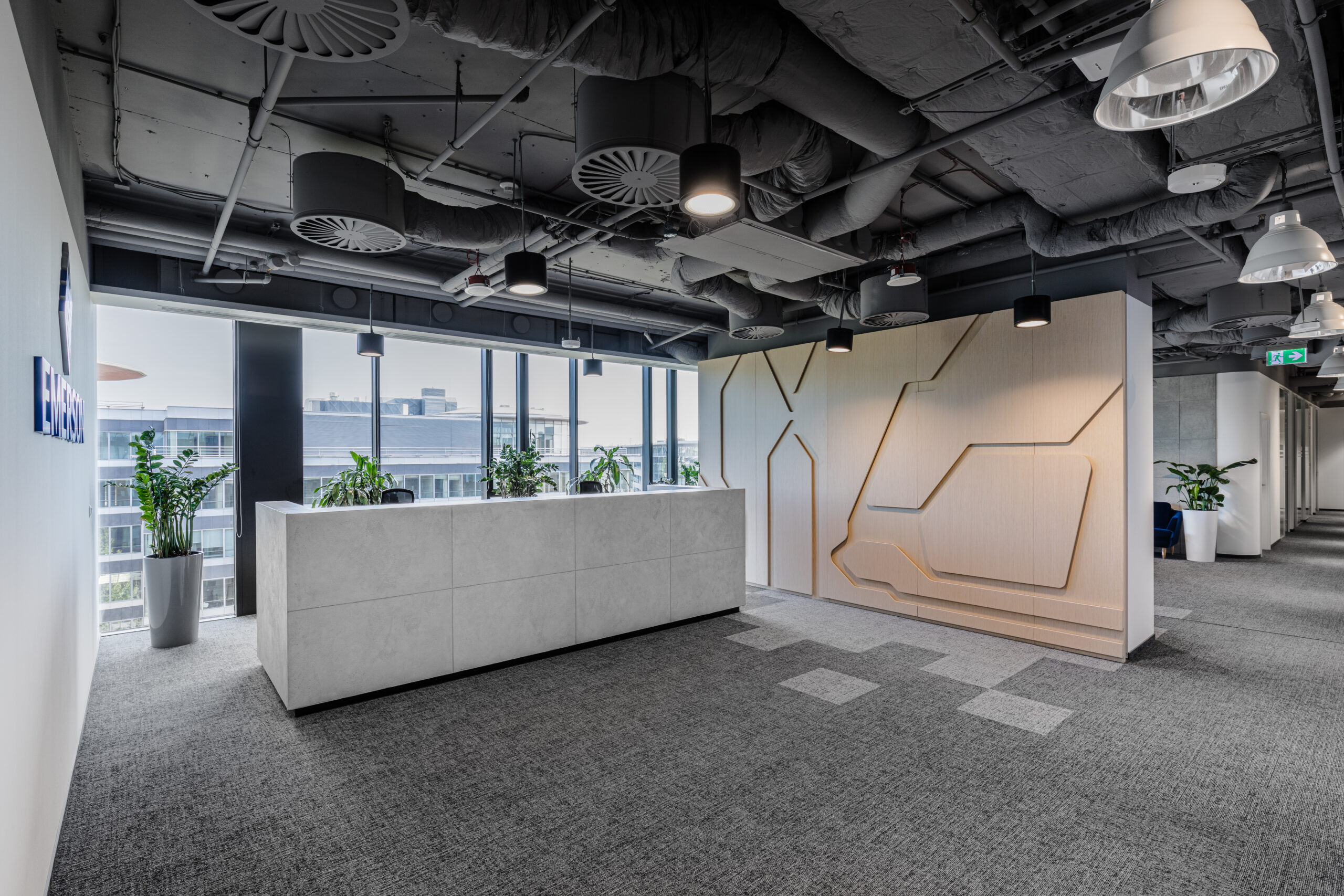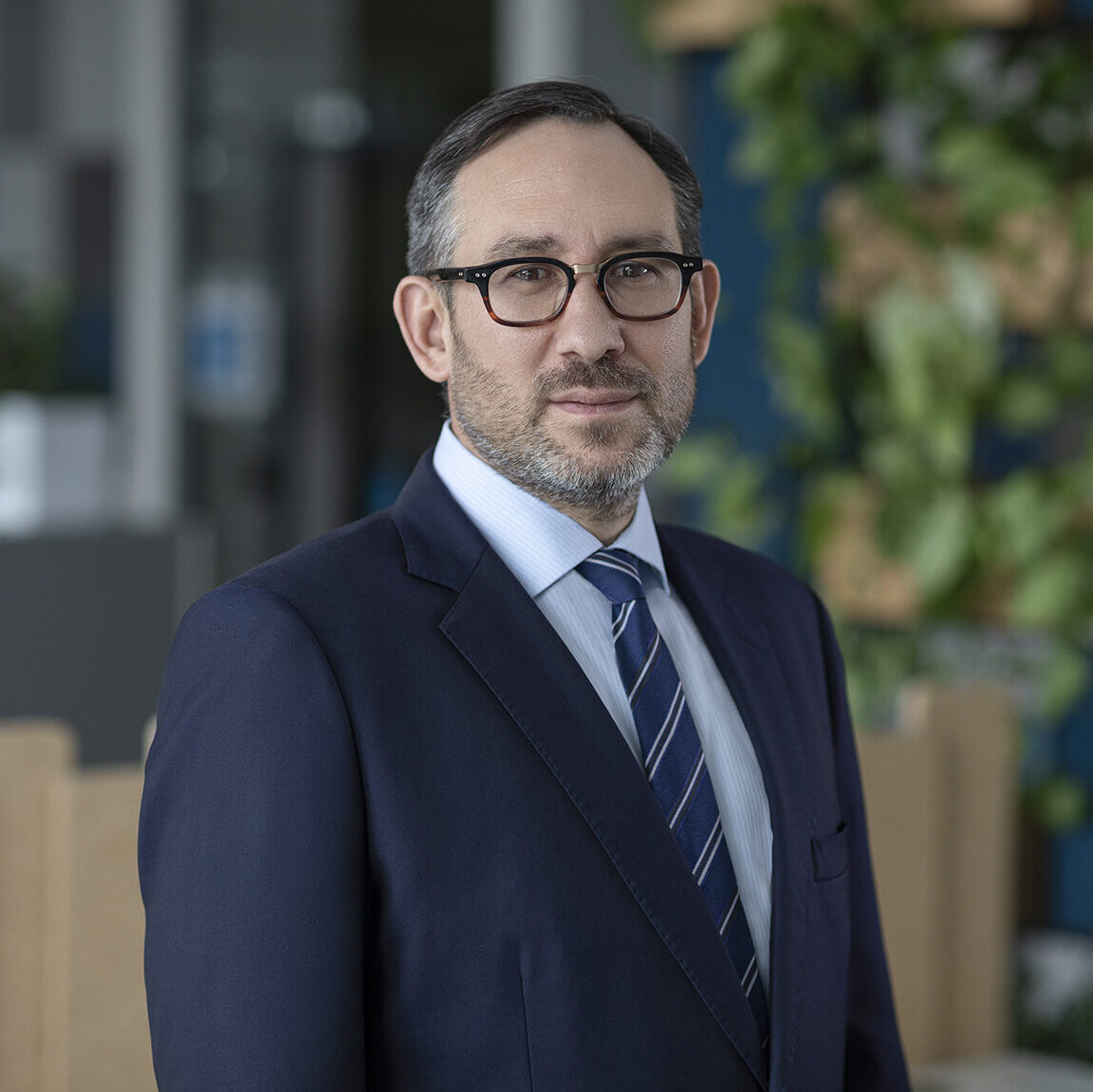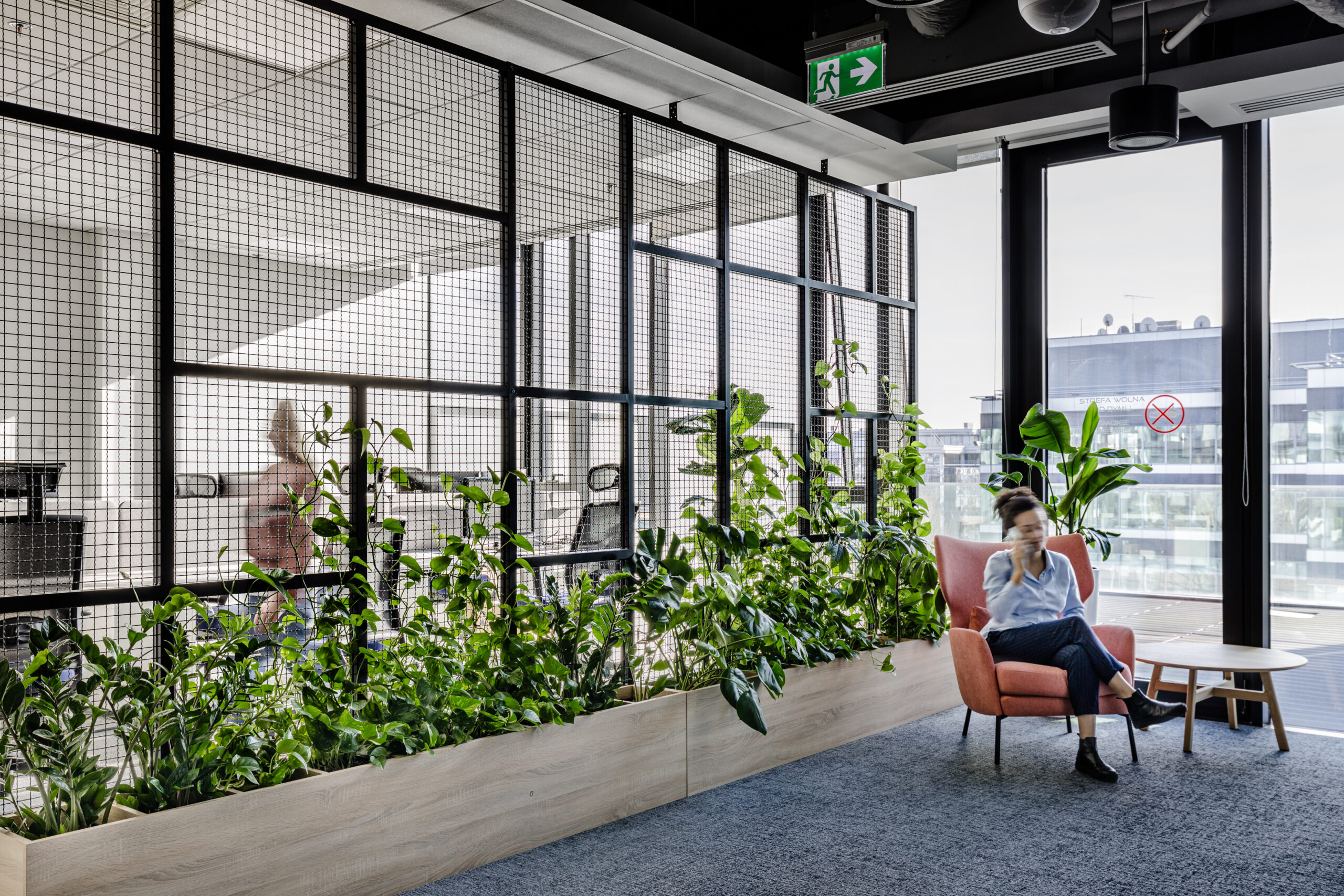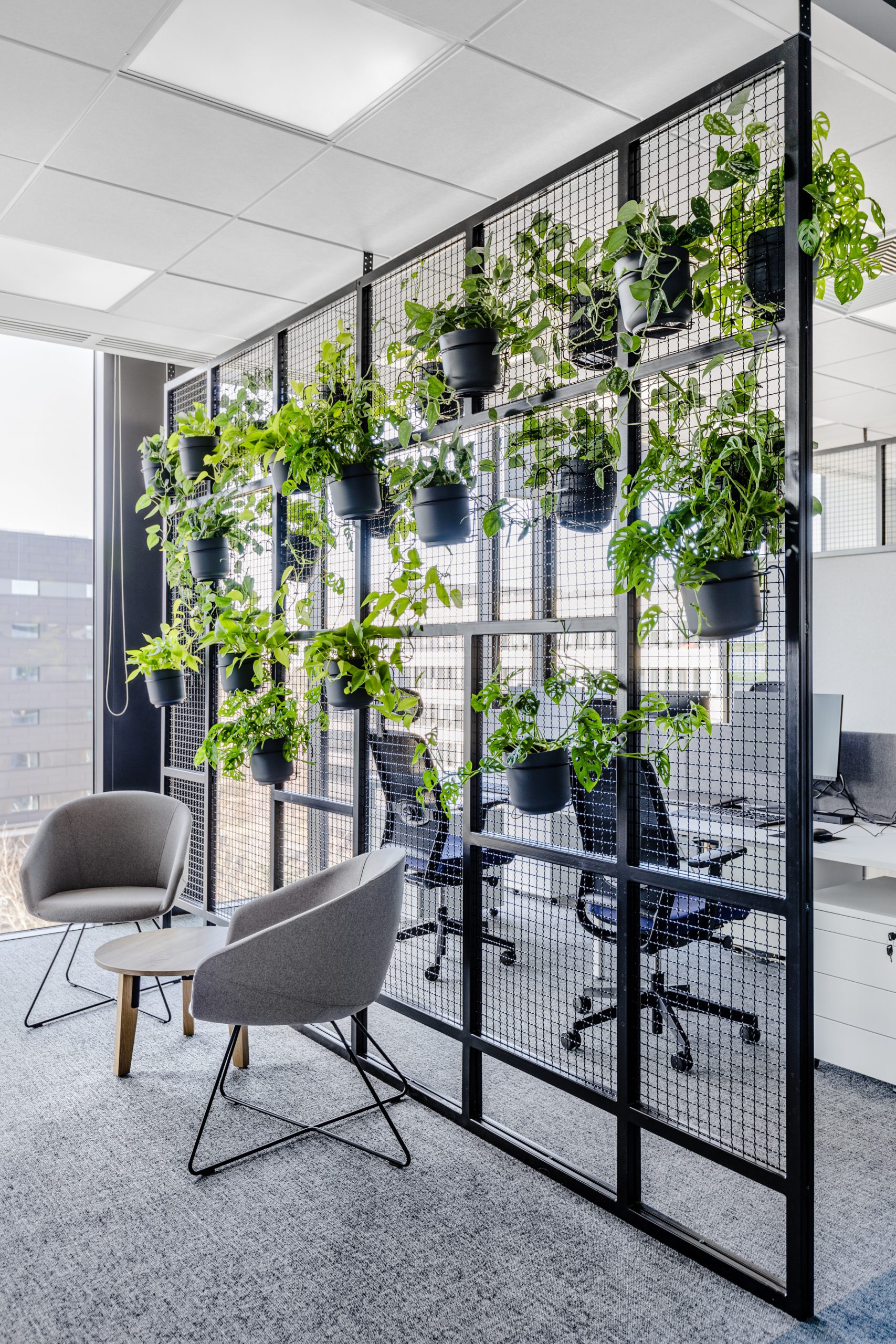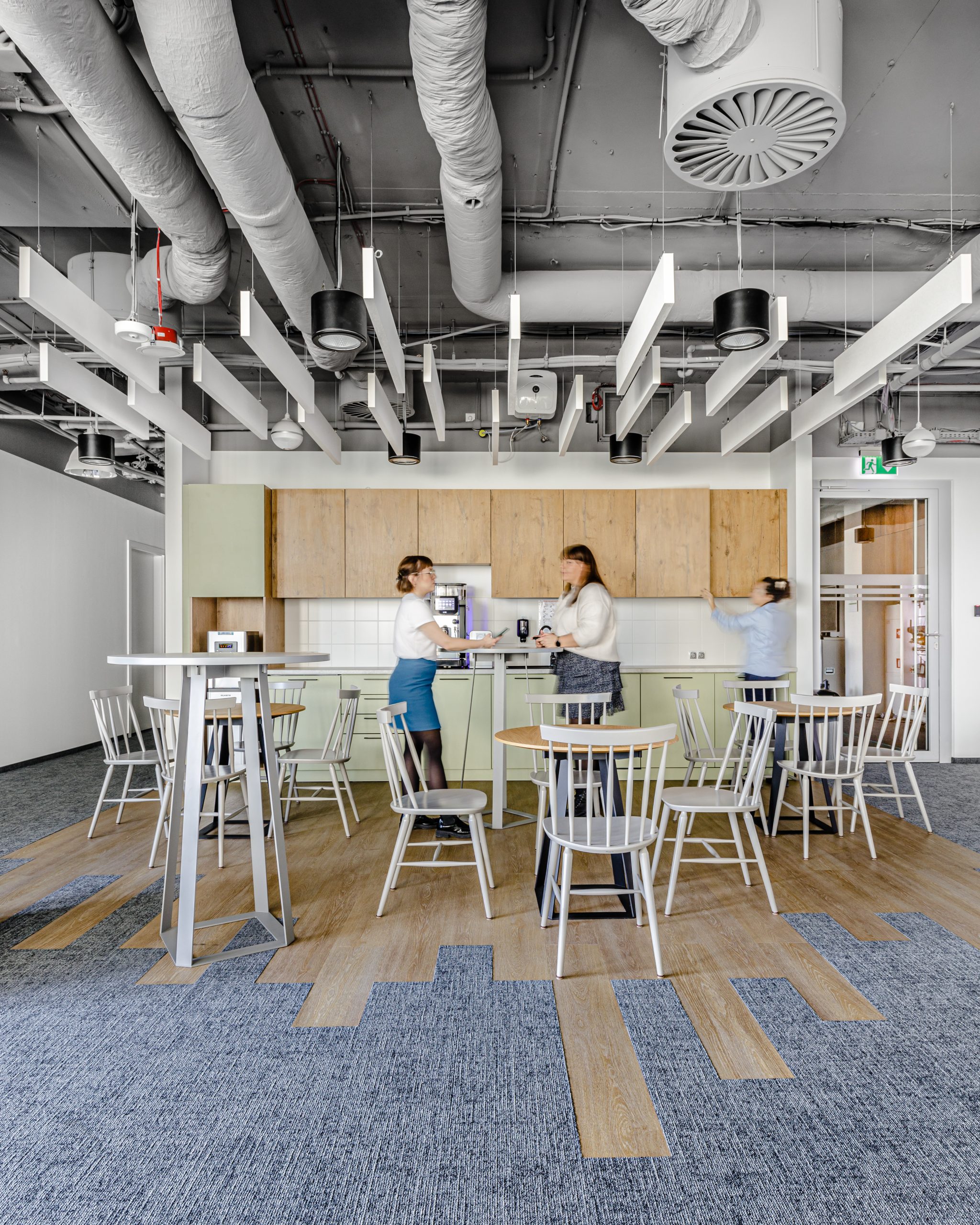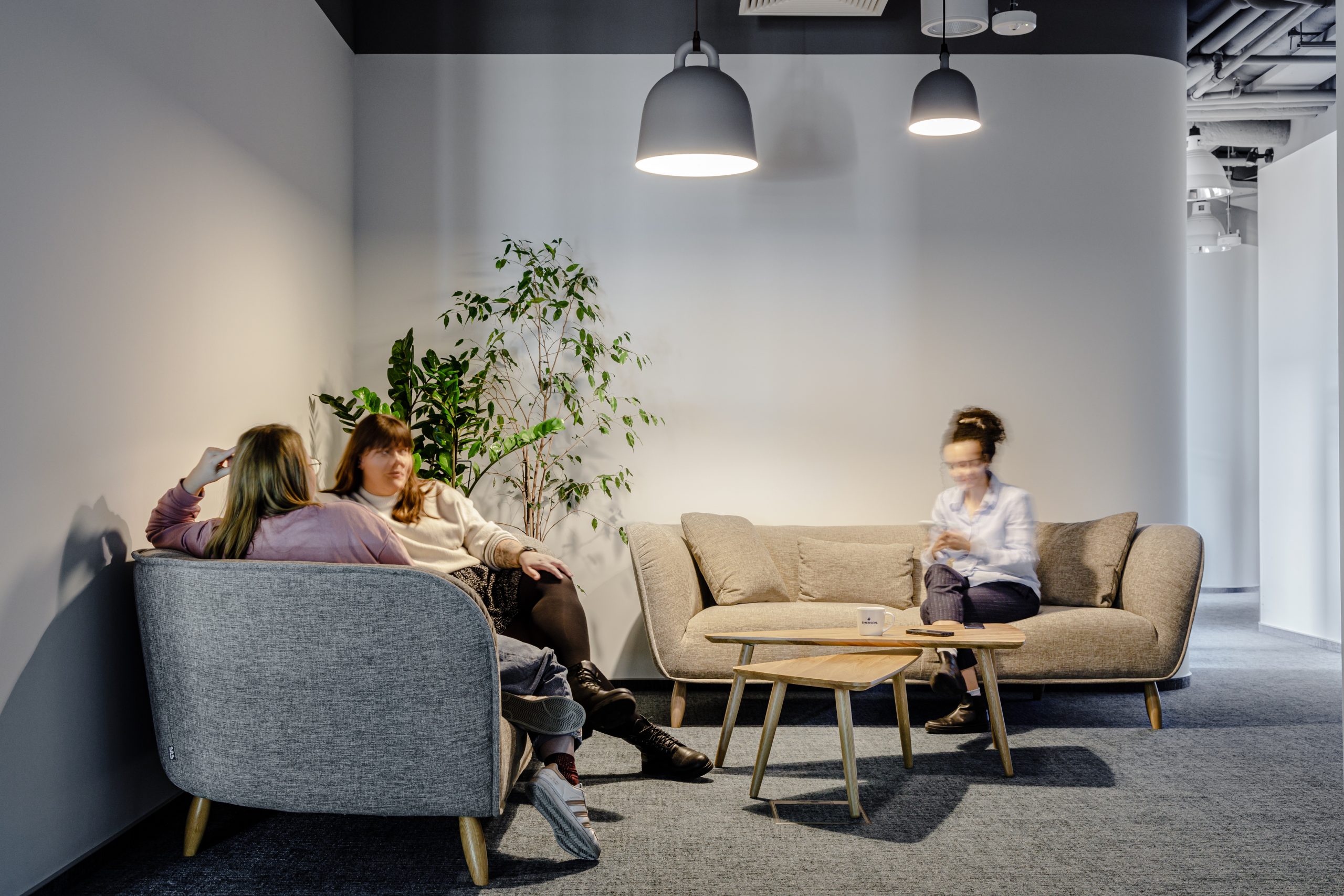Case study: Emerson | Office tailor-made (for the employee)
Conceptual design, which was accepted prior to the selection of the final location. Adjusting the developed design to the requirements of the new building. This is the background of the realization of the new work environment for Emerson.
The main objectives of arranging Emerson‘s new work environment included the implementation of a transparent open space layout, the adaptation of the office to a hybrid work model, and the creation of a diverse space, harmonized with the specific nature of the users’ work.
Project challenges:
- Aligning the design concept with the new building location
- Creating work zones customized to the character of engineers’ work
- Repurposing design elements from the previous office
Business background
Emerson is a global leader in engineering and technology. The organization was founded in the United States in 1890 and currently employs more than 800 people in Poland. Emerson’s Warsaw office is located in Mokotów, in the Konstruktorska Business Center building on an area of 3,700 sqm.
After deciding to relocate and expand its Polish headquarters, the organization was in need of a modern space tailored to the work characteristics of highly specialized engineers. The Client wished that the office would accommodate a hybrid work model, with a layout designed to bring users out of the offices and foster the nurturing of interpersonal relationships. The new arrangement was also supposed to incorporate recycled elements from the previous office space.
Design process
Experts from Colliers conducted the entire relocation process for Emerson, including the selection of the headquarters. The Office Agency assisted the Client at each stage of the negotiation of commercial terms and the lease agreement.
The tenant representation team from Colliers supported Emerson in making the most optimal decision, also in terms of the next stages of the relocation. It was important to us that the Client was satisfied with the outcome, and a smooth transition to working with the architectural team ensured consistency throughout the process.
The architects from the Colliers Define platform, Klaudia Manowska and Eliza Henger, developed the design concept and were later responsible for architectural oversight during the execution process.
The conceptual process began with learning about and defining the needs of each department. One main common denominator was identified – the open space had to be designed in such a way that employees, who had previously functioned in multi-person rooms, would feel comfortable in the new setting. However, to a large extent, the needs differed depending on the nature of the work of individual teams, which had to be translated into the new arrangement.
Emerson employs engineers, people who are involved with technical documentation and even structural elements. The space they work in had to be tailor-made for them. For example, we had to take into account the fact that they have a lot of equipment and therefore need larger desks. For other teams, on the other hand, this aspect was of secondary importance, but they were keen to have a space that harmonizes with the frequency and number of people attending meetings.
Emerson employees also participated in the workshop to develop the design. One of their design proposals was to create a representative entrance area that serves as both a showroom and a lobby for visitors and participants of training courses.
The project was approved before the building in which the headquarters is currently located was selected. As a result, it was necessary to adapt the initially developed arrangement to the new location and its space requirements.
Functional layout
After defining Emerson’s brand values and determining space needs, a concept of a transparent layout that skillfully combines intimate open-space workstations with ad-hoc meeting rooms of varying sizes was created. This maintains a balance between muted areas for tasks that require focus and spaces that foster collaboration. The office also features additional areas such as dedicated chillout zones.
Located next to the terrace, the shared kitchen combined with the dining room has become the heart of the office. Everyone is able to work there, have lunch with other employees or drink coffee in peace. This is also the place where company events are held. Correlating with the organization’s culture, this contributes to building informal relationships and allows interaction between people from teams who are not working together on a daily basis.
Design and space branding
The functional layout is surrounded by industrial design – lots of glass, calm grays and concrete, which alludes to the technical nature of the brand’s business. Responding to the Client’s expectations, and above all to the purely human need to interact with a less synthetic environment, a strong emphasis has been placed on natural elements such as plants and thoughtful access to sunlight at workstations. This is all part of a wellbeing strategy that goes hand in hand with the comfort of the space’s users.
The aesthetic overtones of the office were intended to present the interior as an industrial mecca, directly communicating the nature of the organization. At the same time, the arrangement was supposed to emphasize prioritizing the needs of the users within the space, that is, to expose the employee-first culture that characterizes Emerson.
Emerson’s employees played an important role in the entire process – they suggested the names of the rooms, which only needed to be organized and unified. This was also the basis for the space branding, which enlivens the industrial interior with graphic details and improves communication and daily use of the space.
New space, new work quality
Emerson’s new headquarters satisfies the highest aesthetic standards, promotes integration, and improves employee wellbeing. Due to the utilization of elements from the previous arrangement, it has much less negative impact on the environment.
The best proof that the company’s new work environment is effective is the continuation of the cooperation. As an extension of the same design concept to other locations, the Client has once again engaged the Colliers Define team to develop more spaces.



